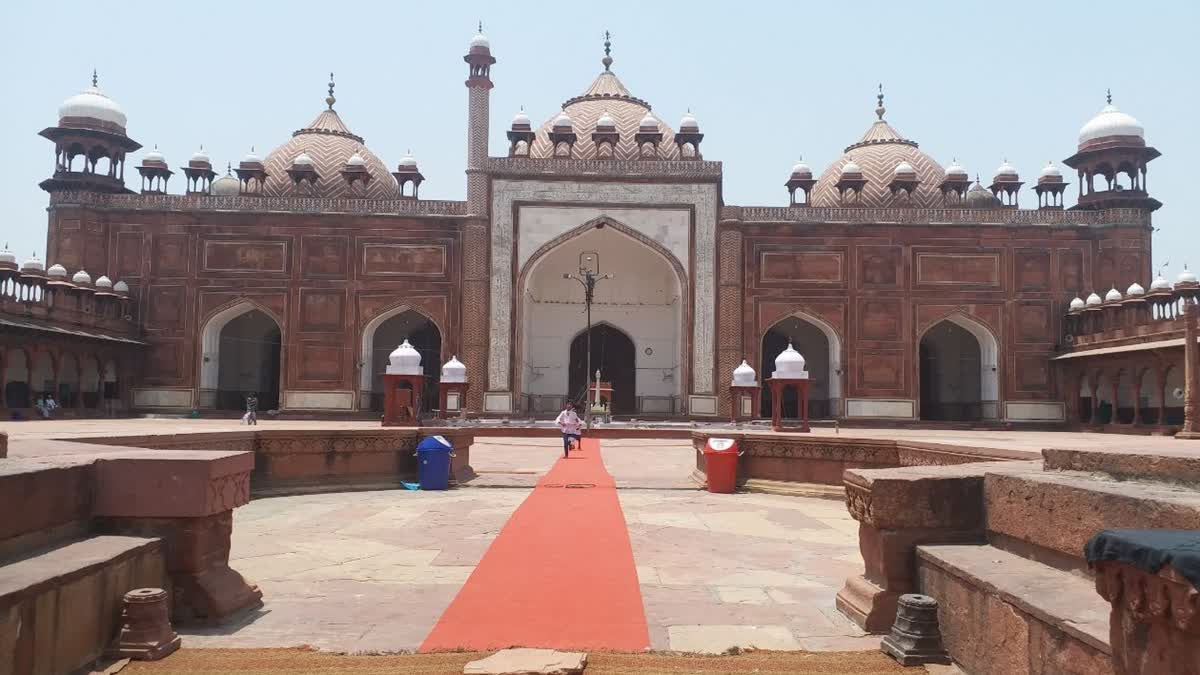Agra: A local court in Uttar Pradesh's Agra will hear a plea seeking to “dig out Lord Krishna idol buried under the staircase” of the Jama Masjid Agra during the reign of Mughal emperor Aurangzeb on Monday Feb 26. The plea filed by the Shri Krishna Janmabhoomi Sanrakshit Seva Trust is being heard by the Civil Judge (Superior Division) Court of Diwani today.
The Allahabad High Court has already directed the Lower Court to settle the matter within six months.
In its plea, the plaintiff Shri Krishna Janmabhoomi Sanrakshit Seva Trust has filed a suit in the court demanding a survey of Jama Masjid by a team of ASI technical experts. The defendants have termed the hearing of the Jama Masjid case as “beyond the jurisdiction of the court”.
Famous storyteller Devkinandan Thakur claims that Mughal ruler Aurangzeb had buried the idol of Lord Keshavdev from Mathura Krishna Janmabhoomi under the stairs of Agra's Jama Masjid (Jahanara Begum Masjid) in 1670. Thakur demanded that the court should first stop the movement of people from the stairs of Jama Masjid. Along with this, an ASI survey of the stairs of Jama Masjid should be done and the idols of Lord Shri Krishna should be removed from there, he said.
Vinod Shukla, advocate representing the Shri Krishna Janmabhoomi Sanrakshit Seva Trust, said that they have demanded from the court that ASI survey should be conducted “to bring the truth of Jama Masjid in front of everyone”. “The dispute can be ended with the survey report of ASI. The reality will come out from the survey report,” he said.
Senior historian Rajkishore 'Raje' said that Mughal emperor Shahjahan constructed the Agra Jama Masjid between 1643 and 1648 and named it after his daughter Jahanara. Raje said that Shahjahan had 14 children including Mehrunnisa Begum, Jahanara, Dara Shikoh, Shah Shuja, Roshanara, Aurangzeb, Umedbaksh, Suraiya Bano Begum, Murad Lutfulla, Daulat Afza and Gauhra Begum.
Raje claimed that, in the seventh decade of the 16th century, Mughal emperor Aurangzeb had demolished the Keshavdev temple of Mathura and had brought all the antiquities along with the idols of Keshavdev temple to Agra. Raje said that Aurangzeb buried the statues and antiquities under the stairs of Jama Masjid.



